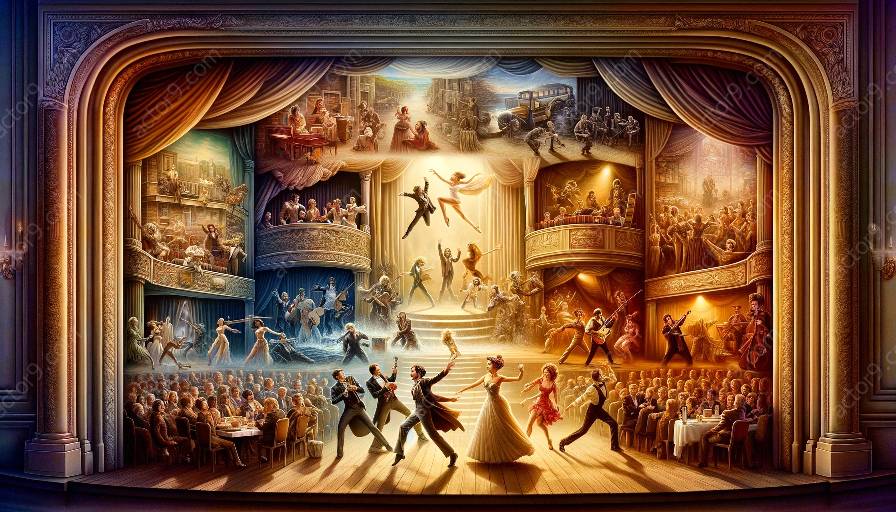From its origins in ancient civilizations to the modern-day stage, the history of musical theatre is a rich tapestry of creativity, innovation, and cultural influence. Exploring the development of musical theatre styles and genres provides a fascinating journey through time and artistic expression.
Early Origins
The roots of musical theatre can be traced back to ancient civilizations such as Greece and Rome, where performances combined music, dance, and storytelling. These early theatrical forms laid the groundwork for the development of musical theatre as we know it today.
The Renaissance and Commedia dell'arte
During the Renaissance, the Italian art form of Commedia dell'arte, with its use of improvised scenarios, stock characters, and musical interludes, contributed to the evolution of musical theatre. This period also saw the emergence of masques and court entertainments in England, incorporating music and performance.
Broadway and the Golden Age
By the late 19th century, musical theatre had found a new home in New York City's Broadway district. The late 1920s to the early 1960s marked the Golden Age of musical theatre, characterized by classic productions such as Oklahoma!, West Side Story, and The Sound of Music. These shows featured memorable scores and compelling storytelling, cementing the genre's popularity.
Evolution of Styles and Genres
As musical theatre continued to evolve, a diverse range of styles and genres emerged, reflecting changing societal trends, cultural influences, and artistic experimentation. From the spectacle of grand operettas to the raw emotion of rock musicals, the genre has continually reinvented itself to captivate audiences.
Modern Era and Global Influence
In the modern era, musical theatre has expanded its reach beyond Broadway, with major productions finding success on international stages and screens. The fusion of traditional musical theatre elements with contemporary influences has resulted in groundbreaking works like Hamilton and Dear Evan Hansen, resonating with new generations of theatregoers.
Diversity and Inclusivity
Today, musical theatre celebrates diversity and inclusivity, embracing stories and characters from a wide range of cultural and social backgrounds. The genre continues to push boundaries and explore new thematic territory, reflecting the ever-changing landscape of the performing arts.
Conclusion
The history of musical theatre is a testament to the enduring power of storytelling, music, and performance. From its ancient origins to the present day, this vibrant art form has captivated audiences worldwide and left an indelible mark on popular culture.




































